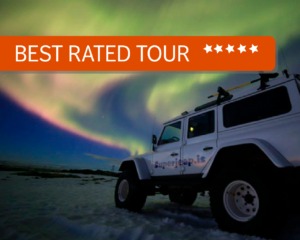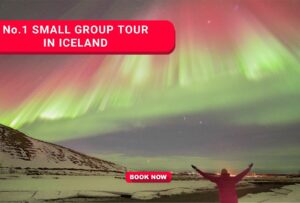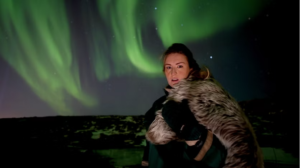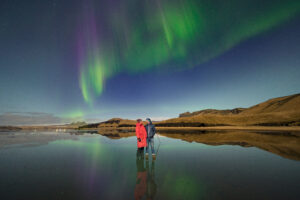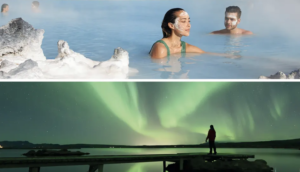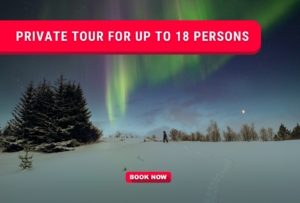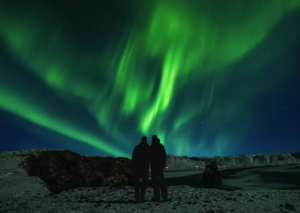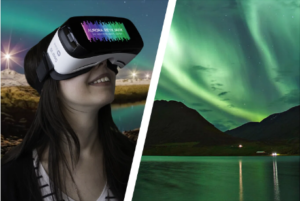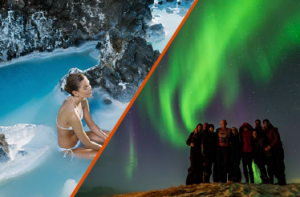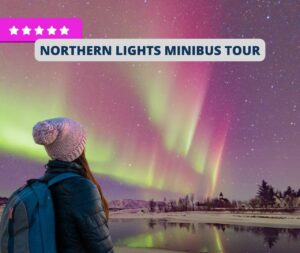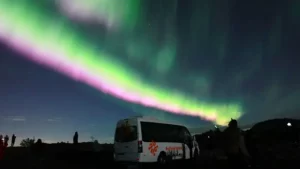Your Aurora Forecast Made Simple
Real-time aurora insights: All the data you need in one place.
Can I see the Northern Lights tonight?
A STEP BY STEP GUIDE FOR YOUR NORTHERN LIGHTS HUNT
PLAN AHEAD
Maximise your chances of witnessing the Northern Lights by following our expert tips! Understanding key factors like moon phases, cloud cover, solar activity, and finding dark sky spots can significantly boost your odds. For example, a bright full moon can wash out faint auroras, while strong activity can create stunning photo opportunities – particularly with the brightness of the moon lighting up natural foregrounds. Plan smarter with real-time data.
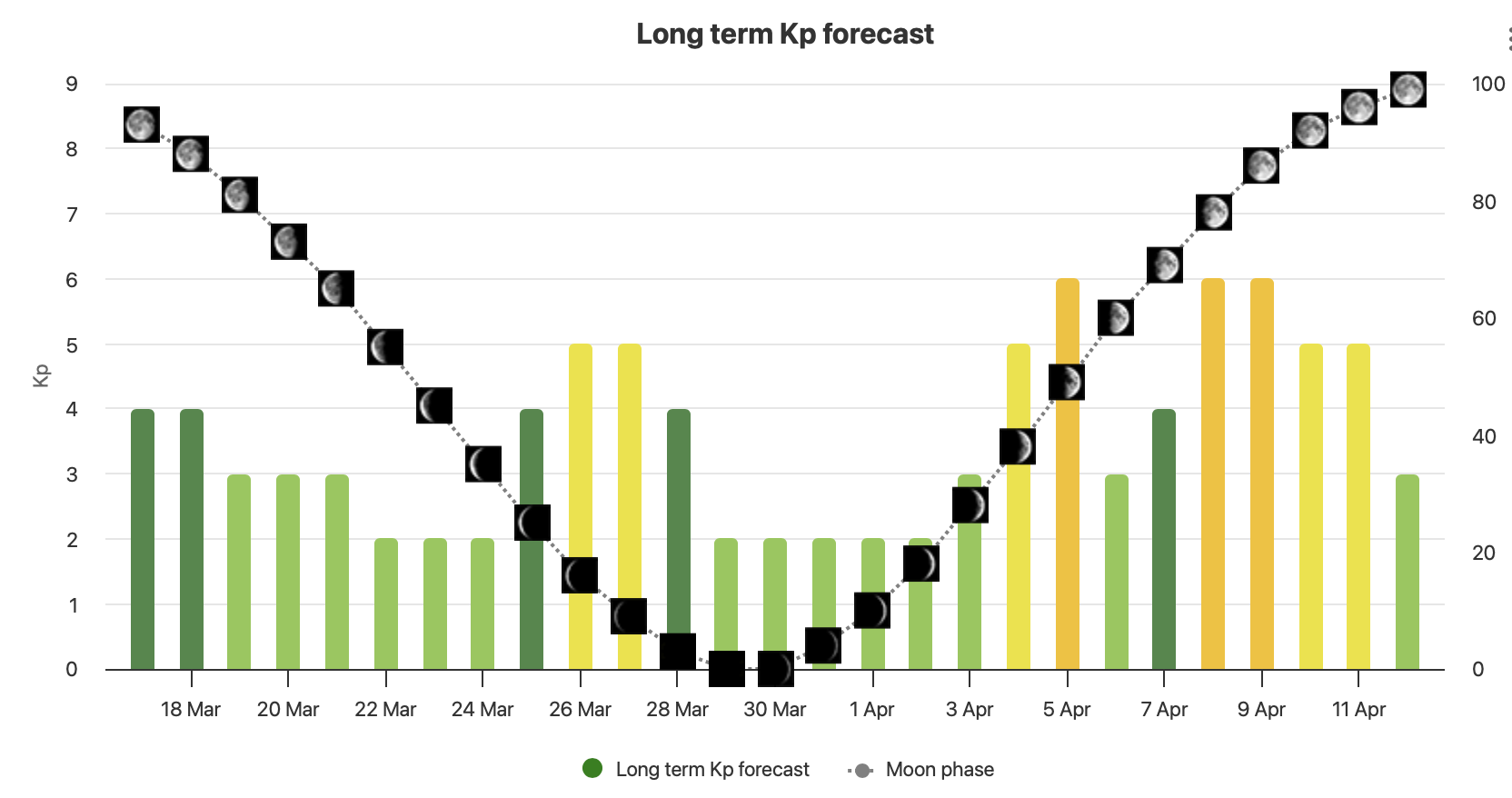
FIND DARK SKIES
Darkness is essential for seeing the Northern Lights, making autumn, winter, and spring the best seasons for aurora viewing. In Iceland’s summer, nearly 24/7 sunlight makes spotting the lights impossible. Below, we’ve provided a map highlighting the main areas of light pollution in Iceland – moving away from these coloured areas will give you clearer views of the Arctic night sky. Plus, we’ve created a detailed guide to the best locations, ensuring you escape light pollution and maximize your chances of witnessing this breathtaking phenomenon.
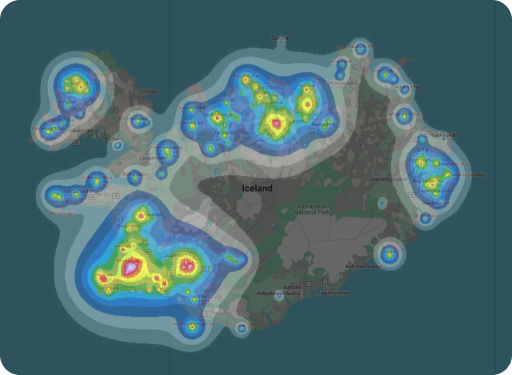
FIND CLEAR SKIES
Aurora Hunting Tip: If you can see stars, you might see the Northern Lights!
Check cloud cover to find clear skies. Use the time slider to track changes, and look for white or light areas on the map for the best viewing spots.
Map colors explained:
🟢 Green – All clouds (composite)
🔵 Blue – Low clouds
🔴 Red – Middle clouds
🟠 Orange – High clouds (Northern Lights may still be visible through them)
Slide to start
PICK A SAFE SPOT
Chasing the Northern Lights in Iceland means travelling in the dark, often on icy or snowy roads, making safety a top priority. Avoid stopping on roadsides, as it endangers both you and other drivers. Instead, use designated parking areas for a safer experience. For a worry-free adventure, join our expert-led tours – they handle the planning and safety, so you can fully enjoy the magic of the aurora.
MONITOR SOLAR ACTIVITY
Monitoring solar activity is essential for predicting the Northern Lights. The Kp Index, shown on the 9-point scale below, measures the planet’s geomagnetic activity and provides an average aurora strength over a 3-hour period. A Kp of 0–2 indicates low activity, 2–3 offers moderate chances, and 4–6 signals strong displays. Readings of 7–9 are rare and can produce spectacular shows. For the most accurate and up-to-date readings, check the real-time data provided below.

Image updated in real-time, courtesy of NOAA's Space Weather Prediction Center.
06
MONITOR LIVESTREAM FROM REYKJAVÍK
Live Stream from Reykjavík: Your Window to the Northern Lights and Midnight Sun
Experience the magic of Iceland in real-time with our live stream from Reykjavík, available year-round on aurorareykjavik.is. Whether you’re dreaming of witnessing the Northern Lights or eager to catch a glimpse of the Midnight Sun, this live feed offers you an immersive look at the stunning natural phenomena Iceland is famous for.
REAL-TIME AURORA FORECAST
The image below, sourced from NOAA’s Space Weather Prediction Center, offers the most up-to-date view of the auroral oval across the Northern Hemisphere. The farther south the oval extends, the greater the chances of seeing the Northern Lights at lower latitudes. We’ve also included real-time Kp Index readings and a 3-day forecast to track solar activity and aurora strength.
Our custom Kp feed aligns with NOAA’s, using green, yellow, and red colours to indicate higher Kp numbers and stronger geomagnetic activity. As the scale shifts from green to red, your chances of witnessing a vivid Northern Lights display significantly increase.

Image updated in real-time, courtesy of NOAA's Space Weather Prediction Center.
CURRENT KP INDEX
3-DAY KP INDEX
TRAVELERS’ REVIEWS
FAQ
Why do Aurora forecasts change?
Aurora forecasts change because the sun is full of surprises! Solar activity, like solar flares and winds, constantly shifts, affecting how and where the Northern Lights appear. Weather conditions on Earth, especially cloud cover, also play a big role. That’s why checking real-time updates keeps you one step ahead for the best aurora experience.
Are there any other Aurora data sources I should keep track of?
Yes! Keep an eye on the Leirvogur Magnetic Observatory, which tracks magnetic disturbances over Iceland. When the graphs show increased movement, it means solar winds are shaking Earth’s magnetic field – often leading to aurora outbursts. Monitoring this alongside the Kp Index and real-time forecasts can give you the best chance to catch the Northern Lights!
How accurate is the Kp index for seeing the Northern Lights?
The Kp Index is a reliable tool for measuring geomagnetic activity and predicting the Northern Lights, but it’s not perfect. It provides a general forecast averaged over 3-hour periods, so conditions can change quickly. For the most accurate predictions, combine the Kp Index with real-time data on solar activity, cloud cover, and local magnetic disturbances.
What are the best months to see the Northern Lights in Iceland?
The best months to see the Northern Lights in Iceland are from September to April. During this period, the nights are longest and darkest, creating ideal conditions for aurora viewing. The peak months are October to March, when the skies are darkest, and solar activity is often stronger. Just remember to check the weather for clear skies.
What is the difference between a low Kp number and a high Kp number for Northern Lights viewing?
A low Kp number (0–2) means the Northern Lights will likely be faint, appearing as a soft, pale glow – often resembling thin clouds – and are usually only visible in far northern areas. A high Kp number (5–9) brings vibrant, dynamic displays with bright greens, purples, and even reds dancing across the sky, sometimes visible much farther south.
Can I see the Northern Lights in summer?
Seeing the Northern Lights in Iceland during summer is extremely unlikely. From May to August, Iceland experiences nearly 24 hours of daylight due to the Midnight Sun, leaving the sky too bright for the aurora to be visible. For the best chance to see the Northern Lights, visit between September and April, when nights are dark and long.
What are the best Northern Lights forecast Apps to enhance my experience?
To enhance your Northern Lights experience, several apps offer real-time forecasts and helpful tools to find the best viewing spots. Top recommendations include:
- My Aurora Forecast – Live aurora maps, 27-day forecasts, and customizable alerts. Great for both beginners and seasoned chasers.
- Aurora Alerts – Northern Lights – Real-time alerts, cloud coverage maps, and Kp index readings. Perfect for instant notifications.
- Hello Aurora – Community-shared sightings, forecasts, and real-time conditions. Ideal for a social and interactive experience.
- Northern Eye Aurora Forecast – Detailed solar wind data, Kp index, and real-time solar activity updates. Best for science enthusiasts.
- Aurora Forecast & Alerts – Hourly forecasts, cloud maps, and customizable notifications. Simple and user-friendly for quick updates.
What are the best Northern Lights tours in Iceland?
For an unforgettable Northern Lights experience in Iceland, joining a guided tour is one of the best ways to increase your chances of seeing the aurora safely and comfortably. Expert guides know the best viewing spots, track real-time conditions, and handle all the planning. We’ve listed our top recommended Northern Lights tours below, offering everything from small group adventures to luxurious super jeep excursions – ensuring there’s a perfect option for every traveller!
Where can I learn more about the Northern Lights?
To dive deeper into the wonders of the Northern Lights, visit the Aurora Reykjavík Northern Lights Center! This interactive exhibition offers fascinating insights into how the aurora forms, stunning photography, and even a virtual aurora experience. You can find the address and opening times in our page footer. It’s the perfect place to learn before heading out to chase the lights!

